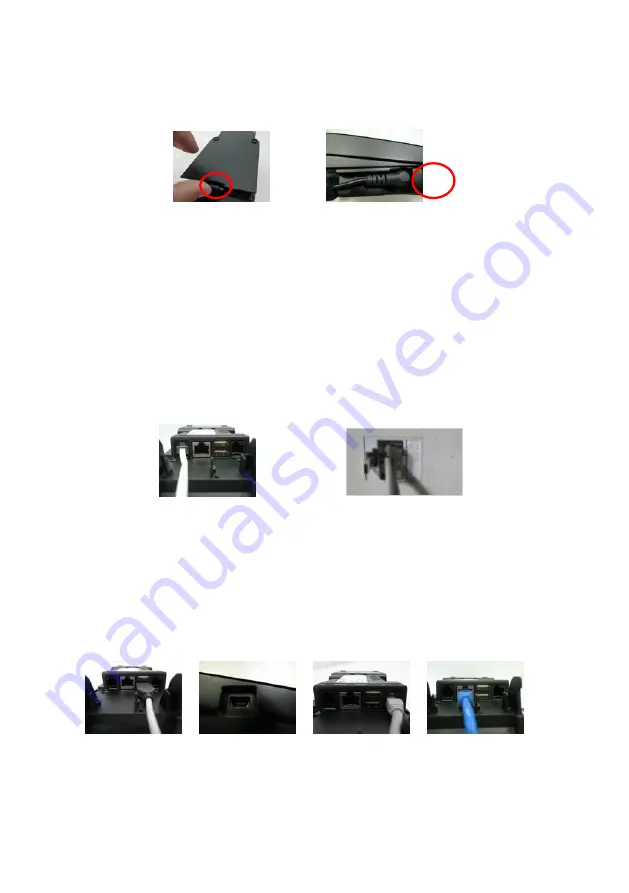
1.
B
EFORE
S
TARTING
Open the gate behind the device (Figure 1), and find the power input on the right side of the
terminal. Connect the plug from the power adapter into the power input (Figure 2). Plug the
power adapter into a 120-volt electrical outlet or into a surge suppressor (recommended) after the
power cord is connected to the power adapter.
Figure 1 Figure 2
Operating Temperature: 0
C to 40
C
Modem Speed: V.22bis 2400bps/ V.32bis 14400bps
RTC battery spec. : 3V, CR2032
Caution:
Risk of explosion if the battery is replaced by an incorrect type. Please dispose of used battery
according to the instructions.
Warning:
A shielded-type power cord is required in order to meet FCC emission limits and also to prevent
interference to the nearby radio and television reception. It is essential that only the supplied power cord be
used.
Connect one end of the phone cord into one of the jacks on the back of the terminal (Figure 3).
Plug the other end of the cord into a modular wall jack (Figure 4). Use only a jack for an analog
line like a fax line or a standard telephone.
Figure 3 Figure 4
(Optional) This terminal supports three USB ports. Two USB host ports locate on the back of the
terminal (Figure 5). One USB device port locates on the left side of the terminal (Figure 6). If the
terminal uses a peripheral device with USB connector, plug it into the USB host port.
(Optional) This terminal supports one RS-232 ports of RJ-12 offset keyed connector. If the terminal
uses a peripheral device with this type of connector and interface, plug it into the RS-232 port on
the back of the terminal (Figure 7).
(Optional) If the terminal needs communication over Ethernet, plug cable into the RJ-45 port on
the back of the terminal (Figure 8).
Figure 5 Figure 6 Figure 7 Figure 8
2.
P
OWER
O
N THE
T
ERMINAL
Plug the power cord into the power jack and plug the power adapter into a 120-volt electrical
outlet or into a surge suppressor (recommended) after the power cord is connected to the power
adapter. Press the “Cancel” button at the front of device (Figure 9) until the system is booted up.























